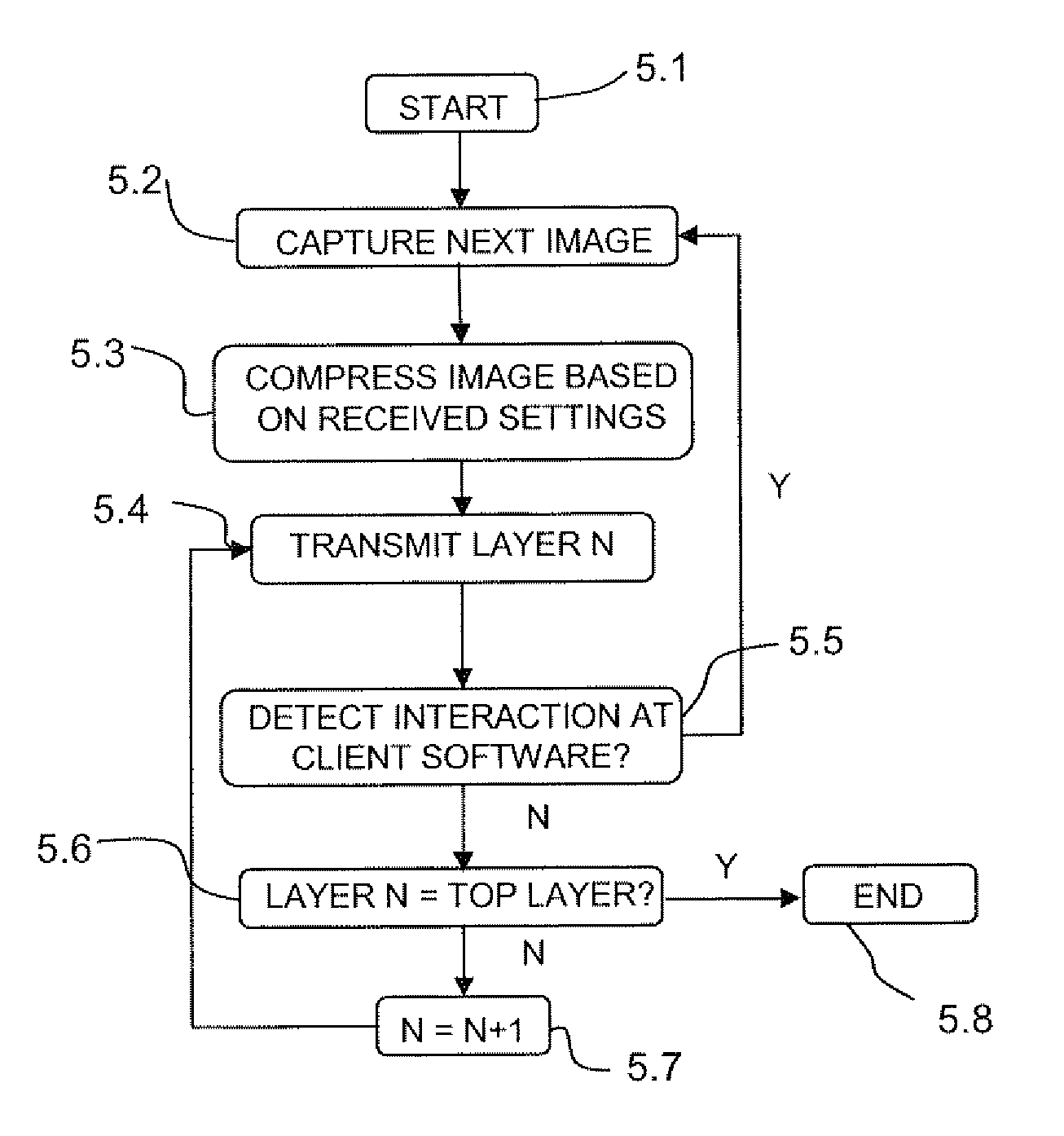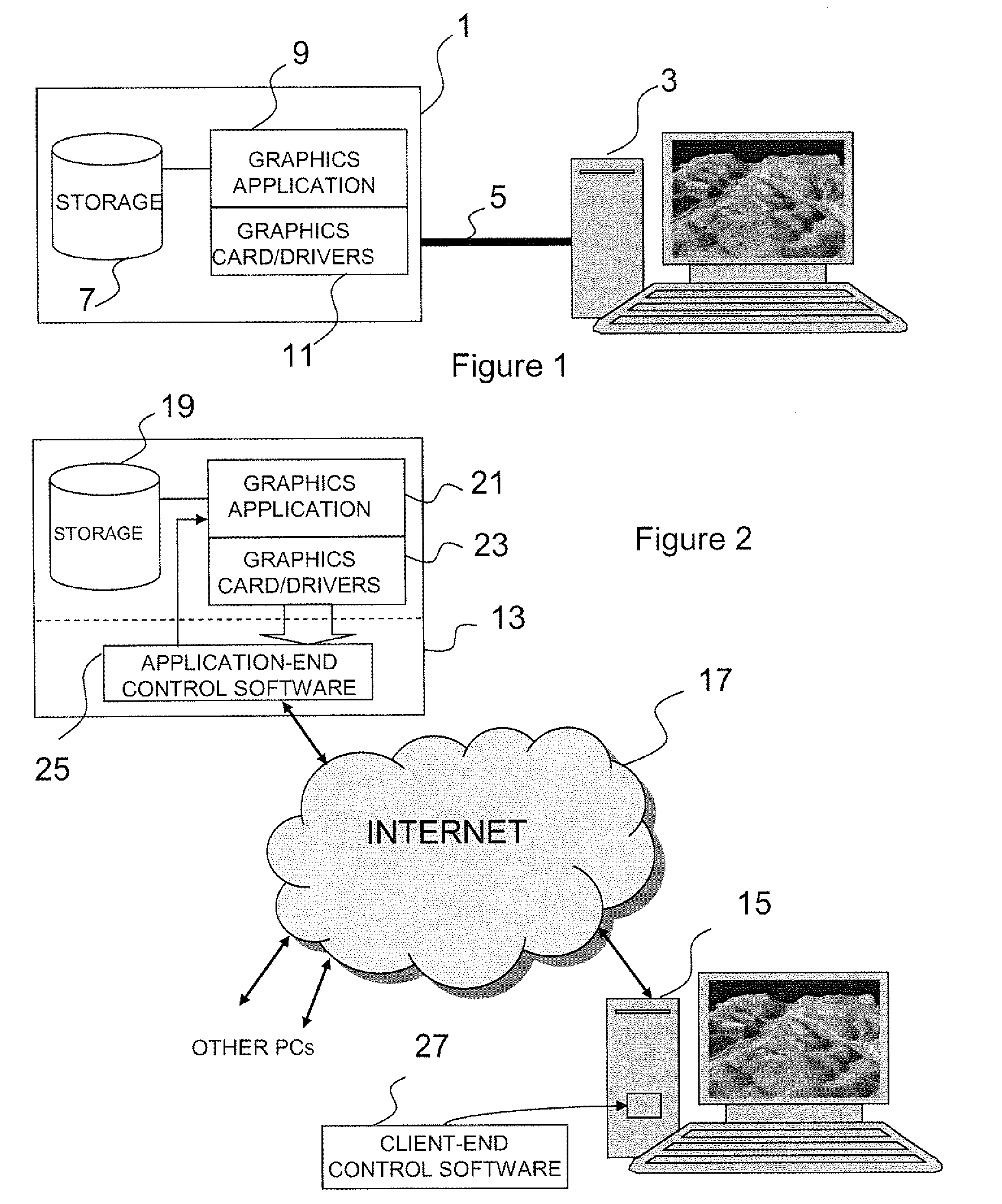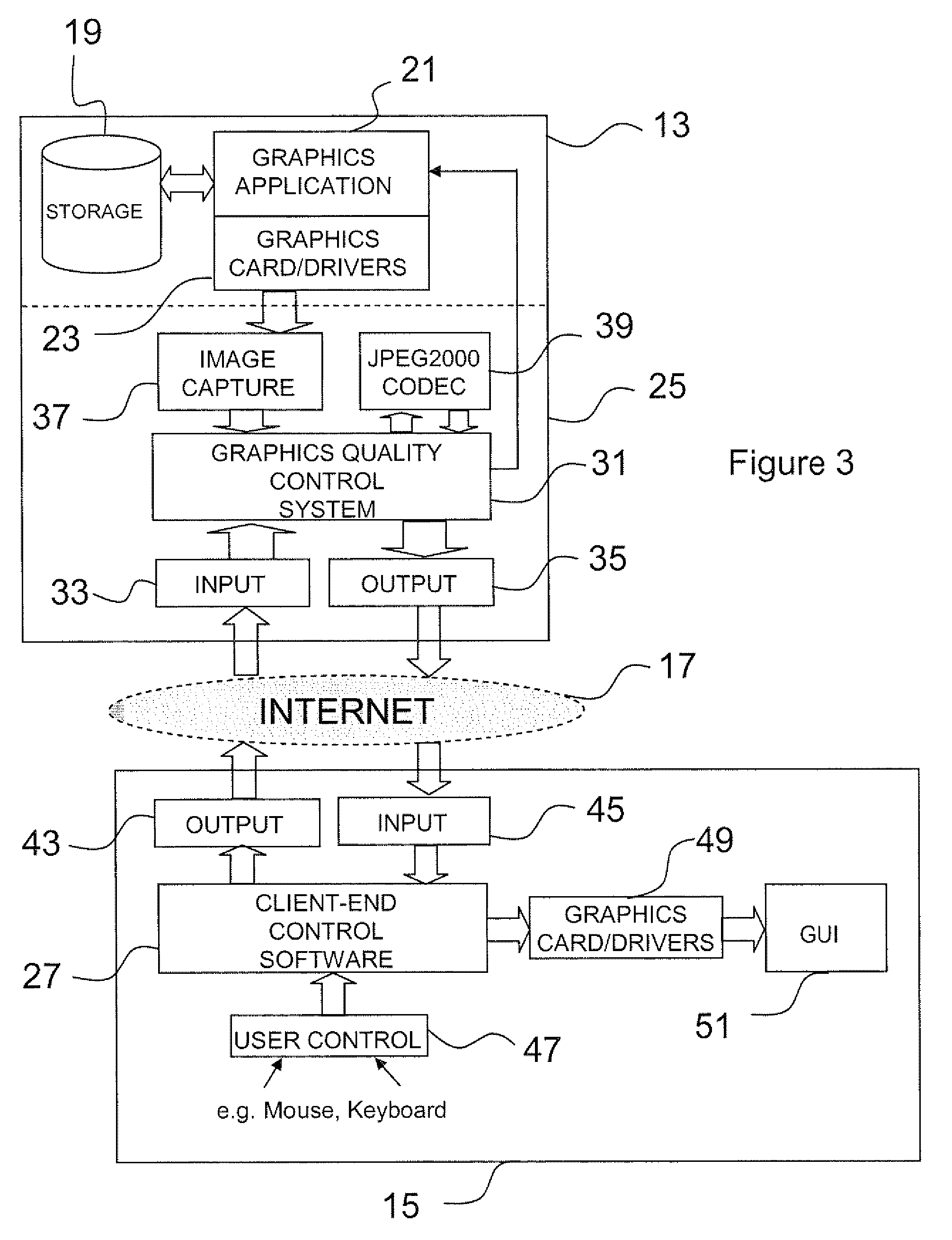Graphical data processing
a graphical data and processing method technology, applied in the field of graphical data processing, can solve the problems of difficult to efficiently distribute such models, difficult to achieve dynamic control, and inability to achieve remote access, etc., to achieve high frame transmission rate, facilitate dynamic control, and improve image quality
- Summary
- Abstract
- Description
- Claims
- Application Information
AI Technical Summary
Benefits of technology
Problems solved by technology
Method used
Image
Examples
Embodiment Construction
[0021]FIG. 1 was described above in relation to the prior art and is useful for understanding the background of the present method / system which is described with reference to FIGS. 2 to 4 of the drawings.
[0022]Referring to FIG. 2, an application server 13 is shown connected to a client terminal 15 via the Internet 17. The Internet 17 is used as the intervening data network in this embodiment since it exemplifies the sort of lower-bandwidth, higher-latency network with which the method / system offers particular advantages. A satellite network has similar bandwidth / latency issues, although the reader will appreciate that it is not intended to restrict the method / system to these network types.
[0023]The application server 13 is similar to that shown in FIG. 1 in that it comprises a storage facility 19 for storing 3D model data, a graphics application 21 and graphics card / drivers 23. In addition, however, we provide application-end control software 25 which, in effect, sits between the gr...
PUM
 Login to View More
Login to View More Abstract
Description
Claims
Application Information
 Login to View More
Login to View More - R&D
- Intellectual Property
- Life Sciences
- Materials
- Tech Scout
- Unparalleled Data Quality
- Higher Quality Content
- 60% Fewer Hallucinations
Browse by: Latest US Patents, China's latest patents, Technical Efficacy Thesaurus, Application Domain, Technology Topic, Popular Technical Reports.
© 2025 PatSnap. All rights reserved.Legal|Privacy policy|Modern Slavery Act Transparency Statement|Sitemap|About US| Contact US: help@patsnap.com



